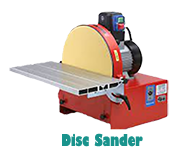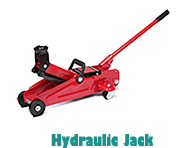When preparing a budget, the restorer should equip their workshop with tools that they can extract the maximum from and operate competently.
There are very few absolute essentials required for a workshop, but a workbench should be at the top of the list. The workbench should be regarded as the minimum item of equipment that always acts as a focal point for any efficient home workshop.
Because all of the delicate work will be carried out on and around it, the workbench is best situated at the end of the workshop furthest away from the opening.
Constantly in use during the project duration, a workbench should be as strong as it is straight. Although it may be less glamourous than most other items of equipment, whatever time necessary must be taken to ensure that the bench will have precisely the right dimension to suit its physical proportions.
Most durable workbenches sit on cast-iron legs, with a preferably soft-wood top, around three inches thick, firmly bolted to them. For maximum stability, the workbench should be anchored to the wall and the floor.
![]()
Next on the list of essential equipment is the fitter's vice, which should be bolted to the workbench, directly over one of the bench legs. When maximum force must be exerted, the bench will provide ultimate resistance.
Vices should be of solid steel and no less than four inches wide.
It is recommended to steer clear of vice with serrated jaws which is liable to cause damage to most metals.
A bench grinder, admittedly less essential, can still be a beneficial addition to any workbench. A compact version of this unit is relatively inexpensive, although investing in a version with a grindstone fitted at one end and a wire brush at the other will prove doubly helpful.
A floor jack, such as a scissor jack or a hydraulic jack, carry out the important function of lifting a vehicle off the floor. Once the vehicle has been raised sufficiently high to enable the jack stands to be slid under the car, always on a solid element of the car, preferably the chassis./p> There are also several items of equipment that would be more than welcome in any workshop but are best suited for a restorer who is in for the long term as a profession.
One of them is a hydraulic car lift, a bulky and expensive item of equipment that can make repairs and restorations to the underside of any vehicle a much more user-friendly experience.
![]()
Air compressors can prove themselves highly valuable, not only in operating spray guns but also for bodywork repairs and fabrication.
Bodywork repairs also require welding equipment, a power grinder or linisher, and drill press, and specific drill bits, the costs of which can add up.
Unless an unlimited budget is at their disposal, these good people would be well advised to take one step at a time and weigh up every investment, especially when it comes to heavier equipment, whether they can extract maximum value for their money.
There are a number of choices of hydraulic car lifts on the market, the least expensive and most popular being the Two-Post Lift, that stands on just two posts with arms that will fit under an average-sized saloon.
 he next and most popular variation of hydraulic lifts is the column lift, fitted with separate columns that can be precisely positioned to suit any size of vehicle wheelbase, making for greater versatility and accessibility. These two are most likely car to be found in a small professional garage workshop.
he next and most popular variation of hydraulic lifts is the column lift, fitted with separate columns that can be precisely positioned to suit any size of vehicle wheelbase, making for greater versatility and accessibility. These two are most likely car to be found in a small professional garage workshop.
Very few restorers carry out any kind of large-scale paintwork in-house, although there is no reason why some light painting can be carried out without having to invest too much in equipment, although some kind of basic paint booth is a necessity, the results will be far from professional.
Back to the homepage- and don't spare the horsepower.
Got a question, a comment, a suggestion or an offer??? - FEEL FREE TO CONTACT US ANYTIME!!;
A guide to acquiring, restoring and maintaining UK or European Classic Cars of the Fifties and Sixties- as well as a recollection of the iconic cars of the era and the visionaries that produced them.





 Classic car restorers, especially those that are new to the hobby/business might convince themselves that it will be impossible to even begin their project without a complete set of tools and equipment at their immediate disposal.
Classic car restorers, especially those that are new to the hobby/business might convince themselves that it will be impossible to even begin their project without a complete set of tools and equipment at their immediate disposal. 

